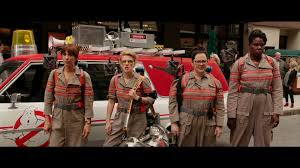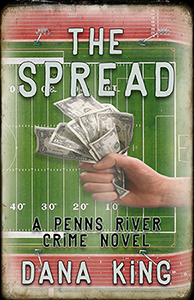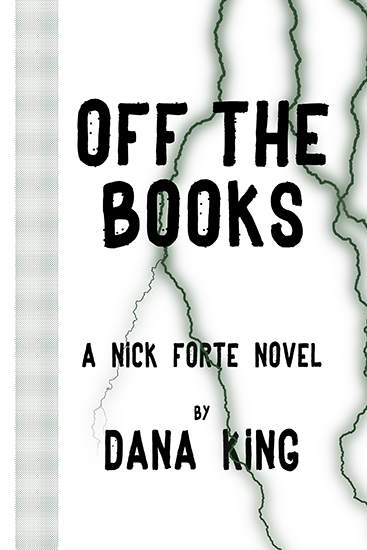John Shepphird won
the 2013 Shamus Award for Best PI Short Story for “Ghost Negligence.” A
writer/director of TV movies, John also serves as the Creative Director of
On-Air Promotions for TVG, America’s horse racing network. Noir master James M.
Cain inspired John’s three “Shill” novellas, a terse, tense, and twist-filled
trilogy with a cast of characters immersed in the art of deception, depravity,
and murder. The trilogy’s final volume, Beware
the Shill, launched August 1 from Down & Out Books. (To celebrate, Book
One, The Shill, is currently
free for Kindle.) The trailer for Beware the Shill is also available for viewing.
One Bite at a Time: Tell us about Beware the Shill.
John Shepphird: The title refers to my character Jane
Innes that transforms from a pawn to a rook. In The Shill (book #1) she's naïve, sacrificed, but we like her. But
Jane won't be wronged. She's talented and determined. In Beware the Shill (book #3) she relies on smarts and skill to take
down the deadly deceivers that ruined her life. It's about rooting for an
underdog.
OBAAT: Readers love to ask where authors get their ideas and
most authors reply with something along the lines of “we’re tripping over them.
The trick is to find the idea that works best for me.” What made this idea
worth developing, and how much development from the original germ was required?
JS: I was drawn to writing a caper and what sparked me was the
idea of a girl from the other side of the tracks that uses her skills as an
actress to deceive an elite mark. She knows better, but she fell in love with a
persuasive con man, and since love it blind…. That was the seed, and it grew
from there. The Shill is the caper, Kill the Shill a detective story, and Beware the Shill a thriller.
OBAAT: How long did it take to write Beware the Shill, start to finish?
JS: I’d estimate seven
months not including other projects that distracted me. I struggled with Beware the Shill more than the others
because I had to wrap up my characters and it all had to make sense. I wanted
to bring it back to where it had started, California, but not necessarily Los
Angeles because I’d already explored that in book #1.
Then I came
across a story of California Gold Rush history that lit the pilot light--the
shipwreck of the steamship Yankee Blade. This was an incredible tragedy fueled
by greed and cowardice. Weaving in elements of that story into contemporary time
gave me everything I needed--the setting, motivation, and the basic structure.
Once I had that figured out I blazed forward. I’d already touched on Caribbean
pirate history in book #2, Kill the Shill,
so a dash of historical was not completely foreign. It made sense.
OBAAT: Where did Jane Innes come from? Is she based on people
you know? Does she have parts of you in her? (Note to readers: Not that way.
Get your minds out of the gutter.)
JS: I work in television and Jane is a hybrid of actresses
I’ve known over the years that tie their self-worth into their career. Making
it becomes all or nothing and this ultimately this makes them miserable and yet
another casualty on the Boulevard of Broken Dreams. Jane is talented and
capable, but also flawed. She hangs on her acting coaches every word hoping for
just a little bit of praise. Ultimately she just wants love in her life and
dreams a successful career will get her there, but her perspective is skewed.
Although I was a writer/director as opposed to an actor in my 20s and 30s I was
guilty of that too. In retrospect I wish I would have written more and barked
up less trees.
OBAAT: In what time and place is Beware the Shill set and why was this time and place chosen?
JS: The series is a contemporary noir set in Los Angeles,
Sarasota Florida, and the Caribbean. Beware
the Shill explores Pismo Beach, Morro Bay, and California’s coast in the
proximity of Vandenberg Air Force Base.
OBAAT: How did Beware the
Shill come to be published?
JS: I was at Bouchercon in Albany and author Robert J. Randisi
introduced me to Eric Campbell from Down & Out Books. This was before The Shill was finished as a novella and shortly
thereafter it was picked up by an eBook publisher Stark Raving Press but they
folded rather quickly. I reached out to Eric, hat in hand, and he graciously
picked it up. I’m fortunate to be with Down & Out and honored to be among
their stable of great authors.
OBAAT: What kinds of stories do you like to read? Who are your
favorite authors, in or out of that area?
JS: I’m a fan of vintage noir and continue to re-read James M.
Cain. It’s his economy and fractured love stories that resonate with me most. I’
drawn to capers and can’t get enough of Lionel White and Donald E. Westlake.
Contemporary authors I read are Steve Hamilton, Jason Starr, Wallace Stroby,
and Megan Abbott.
OBAAT: What made you decide to be an author?
JS: A love for suspenseful stories. I’m not necessarily a fan
of fantasy and science fiction because, for me, the best stories are grounded
in reality. I have to believe they could actually happen. There’s always been a
lot of storytelling going on in my large Catholic family so maybe that has
something to do with it.
OBAAT: How do you think your life experiences have prepared you
for writing crime fiction?
JS: The theme of most of my fiction is the art of deception so studying and performing magic was a big
factor because it’s all about the twist. Working as a filmmaker in a variety of
genres has also contributed.
OBAAT: What do you like best about being a writer?
JS: I actually enjoy the process of writing, and re-writing,
playing with ideas and seeing if you can make them work. It’s also great to
hang around other writers, especially crime writers, and swap notes. We’re all,
in one way or another, ne’er-do-wells that share a dark and often humorous
sensibility. The community is extremely supportive.
OBAAT: Who are your greatest influences? (Not necessarily
writers. Filmmakers, other artists, whoever you think has had a major impact on
your writing.)
JS: Cinema and 70s crime television has had a major impact--a
spectrum from Jack Webb to Alfred Hitchcock. I’ve always been drawn to
antiheroes. My first film as a co-writer and director was titled Teenage Bonnie and Klepto Clyde.
OBAAT: Do you outline or fly by the seat of you pants?
JS: Writing fiction I’ll often write the later part of a story
first, the final culmination, and then go back and start at the beginning. By
the time I get to that chapter it will need a major rewrite but this process
helps me to know where I’m going. In screenplays outlines and synopses are
vital to establish structure.
OBAAT: Give us an idea of your process. Do you edit as you go?
Throw anything into a first draft knowing the hard work is in the revisions?
Something in between?
JS: I’ll write (compose) and then go back and rewrite the
chapter or scene immediately. Then I’ll move on to the end and then rewrite it
all again from the beginning. I’m amazed by authors that can compose from
scratch with only minor rewrites, but that’s not me. It’s a process of
rehash.
OBAAT: Endings are hard and can make or break a book. Americans
as a whole tend to like happy endings, and those are the books that tend to
sell best. What do you look for in an ending?
JS: An ending doesn’t have to be happy but it does have to make
sense. There are a lot of James Cagney movies without happy endings, but they
make complete sense and there’s closure. It’s about the journey and the
decisions a protagonist makes along the way should define that ending. Crime
and mystery readers expect closure. I think it’s inherent.’
OBAAT: Who is your intended audience?
JS: Readers that enjoy page-turning crime fiction, both male
and female--same that read Gillian Flynn or Lee Child.
OBAAT: If you could give a novice writer a single piece of
advice, what would it be?
JS: Carve out time every day to write. A little bit of
progress over time adds up. Write what you enjoy. Study structure. Keep it lean
and mean.
OBAAT: Generally speaking the components of a novel are
story/plot, character, setting, narrative, and tone. How would you rank these
in order of their importance in your own writing, and can you add a few
sentences to tell us more about how you approach each and why you rank them as
you do?
JS: Escalation (story/plot) is important to me because my
aesthetic is structure and not just in fiction and film but music too. If I
played an instrument it would be the bass. Then character (the melody) which
should drive the structure through his or her wants and needs. Tone and setting
tie in third place.
OBAAT: If you could have written any book of the past hundred
years, what would it be, and what is it about that book you admire most?
JS: Victor Hugo’s The
Hunchback of Notre Dame doesn’t count because that was written over a
hundred years ago, so it’s either James M. Cain’s The Postman Always Rings Twice, Daphne du Maurier’s Rebecca, or John Steinbeck’s Of Mice and Men. These three novels were
written in the 1930s, the Great Depression. All embrace working-class
characters seeking to advance themselves.
OBAAT: Coming from Western Pennsylvania, I have a fascination
with the origins of names. “Shepphird” is an unusual spelling of a not uncommon
name. What’s the family background there?
JS: My father, when he was alive, did a detailed search of our
name. There are no “Shepphirds” in the UK but there are in North America. I’m
convinced it was originally “Sheppherd” with an “e” but through bad penmanship
somehow that “e” became an “I”. But the
mystery writer in me imagines the change was intentional. Maybe my relation purposefully
tried to hide identity. More likely it was a combination of an old, leaky quill
dotting the “e” and probably bad light.
OBAAT: What are you working on now?
JS: A whodunit thriller set among the cast-and-crew of a low
budget TV movie. It’s titled Bottom
Feeders.














